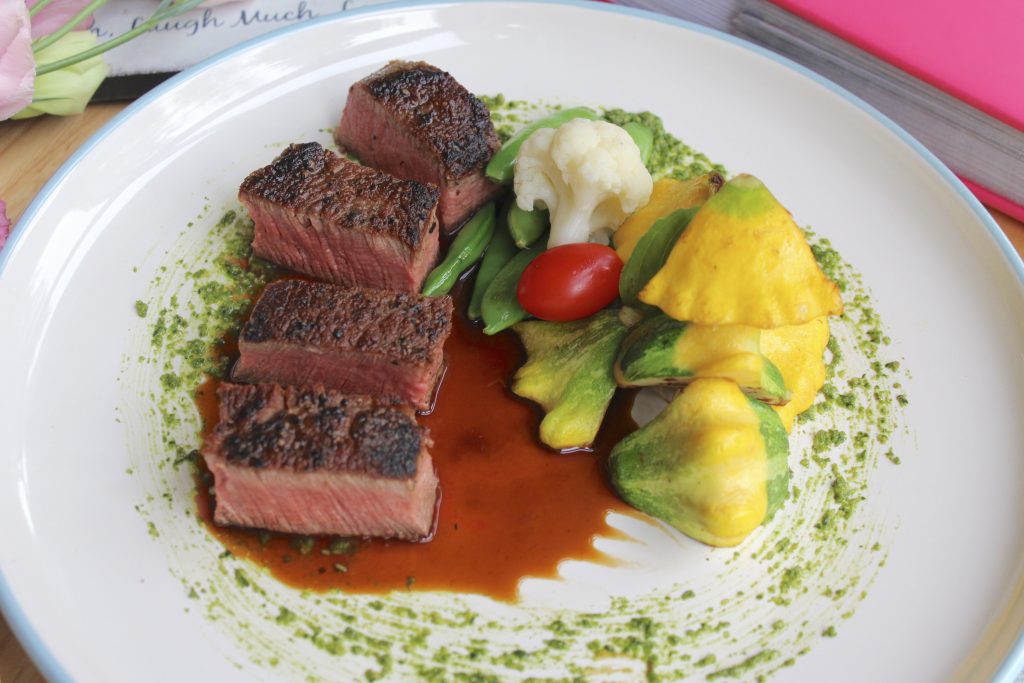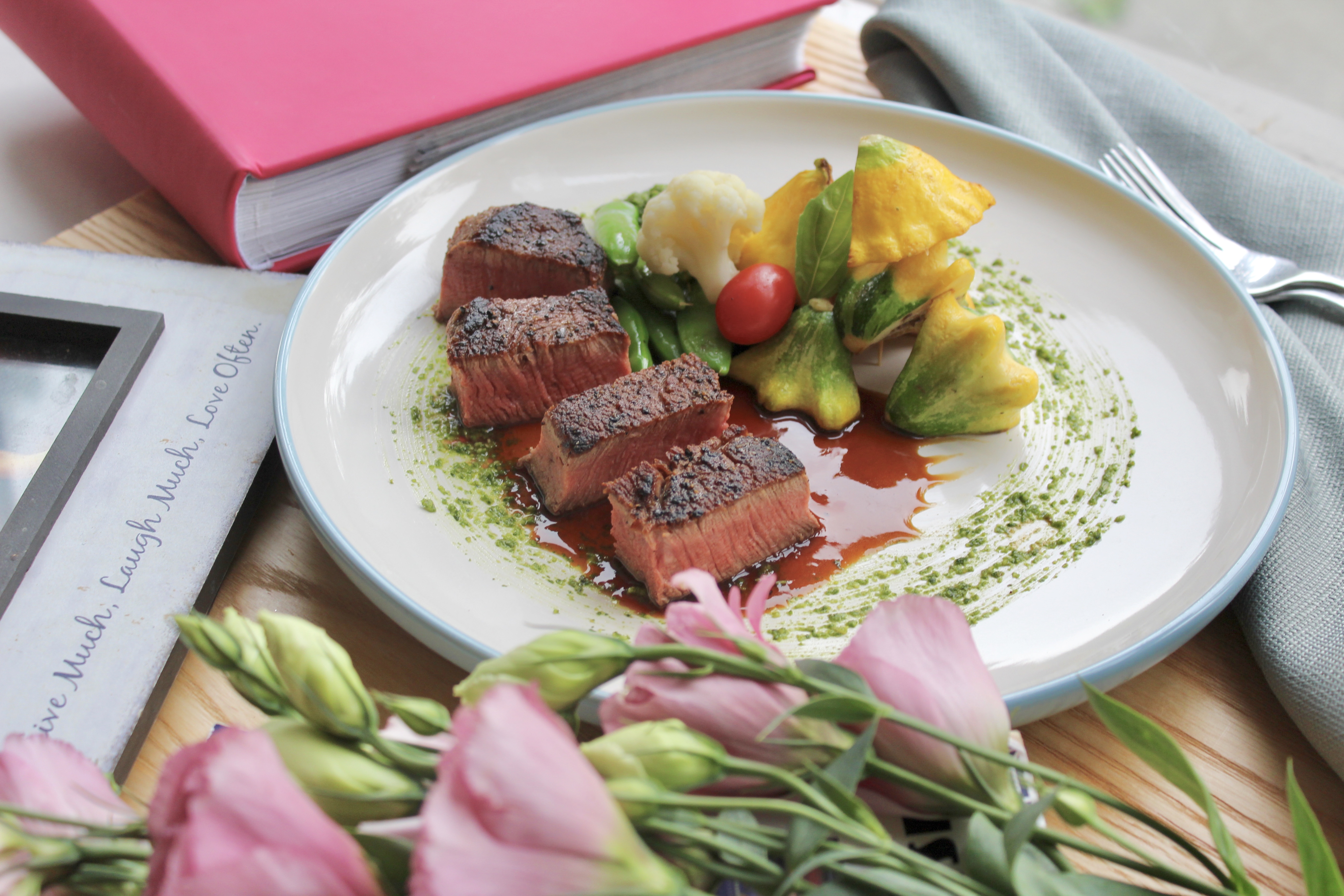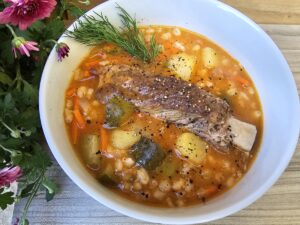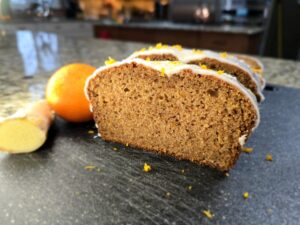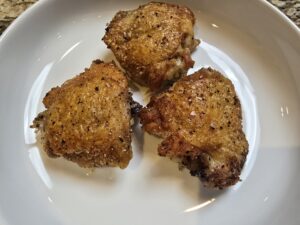For a premium cut like filet mignon, having a recipe you can rely on is absolutely essential. After all, you want to make sure every bite is cooked to perfection! This recipe has been tested over and over again to ensure that your filet mignon turns out flawlessly tender, juicy, and full of flavor every single time. Best of all, the process is surprisingly simple and quick: just a few minutes on the stovetop, a few more in the oven, and a final touch with a flavorful pan sauce while your steak rests.
I’ve shared a couple of sauce options to pair with your filet mignon—either a classic peppercorn sauce or a rich demi-glace. While demi-glace is a bit more time-consuming to make, this recipe focuses on the quicker peppercorn sauce, which still brings plenty of bold flavor to your dish.
Tips for a Perfect Filet Mignon
- Pat the Steak Dry
Moisture is the enemy of a good sear. Use a paper towel to pat your steak dry before cooking. This ensures that instead of steaming, the steak will develop that beautiful golden-brown crust we all love. - Season and Chill
If you have time, season the filet with kosher salt and refrigerate it on a wire rack for 1-24 hours, uncovered. This helps draw out moisture from the surface, enhancing the flavor and texture of the steak. - Preheat the Skillet
Your skillet should be screaming hot before you add the filet. Heat it for at least 3-4 minutes until it’s shimmering. This high heat helps create a crusty exterior while keeping the inside tender and juicy. - Avoid Overcrowding the Pan
Overcrowding the pan will cause the steaks to steam rather than sear. If you’re cooking more than one filet, do it in batches to allow each piece enough room to develop a proper crust. - Let it Sear Undisturbed
Once you place the steak in the skillet, don’t touch it for the first 3 minutes or so. Letting it sear undisturbed is crucial for achieving a flavorful crust. - Finish in the Oven
Transfer the steak to a low-temperature oven (around 250°F). This gentle method ensures even cooking throughout and prevents the outer edges from becoming overcooked. - Use a Thermometer
An instant-read thermometer is your best friend when cooking filet mignon. Decide on your preferred doneness and remove the steak from the oven a couple of degrees before it reaches that temperature (residual heat will finish cooking the steak as it rests). - Rest Before Slicing
Let the steak rest for a few minutes before slicing. This helps the juices redistribute, ensuring each bite is perfectly juicy and tender.
Final Thoughts
Pair your perfectly cooked filet with either a luscious peppercorn sauce or a rich demi-glace for a truly restaurant-worthy meal. And if you’re curious about the differences between the two, the peppercorn sauce offers a quicker, more approachable option, while the demi-glace brings a deeper, more complex flavor that’s worth the extra effort.
In case you’re wondering about the photography on the blog, I started this project as a hobby, sharing recipes and photos I snapped on my phone. But with so much support and encouragement from readers like you, I’ve been working to improve my photography skills using a professional camera. The goal is to gradually update the photos for all of my recipes so you can really see the quality of these dishes!
Now, let’s get cooking! 🔥
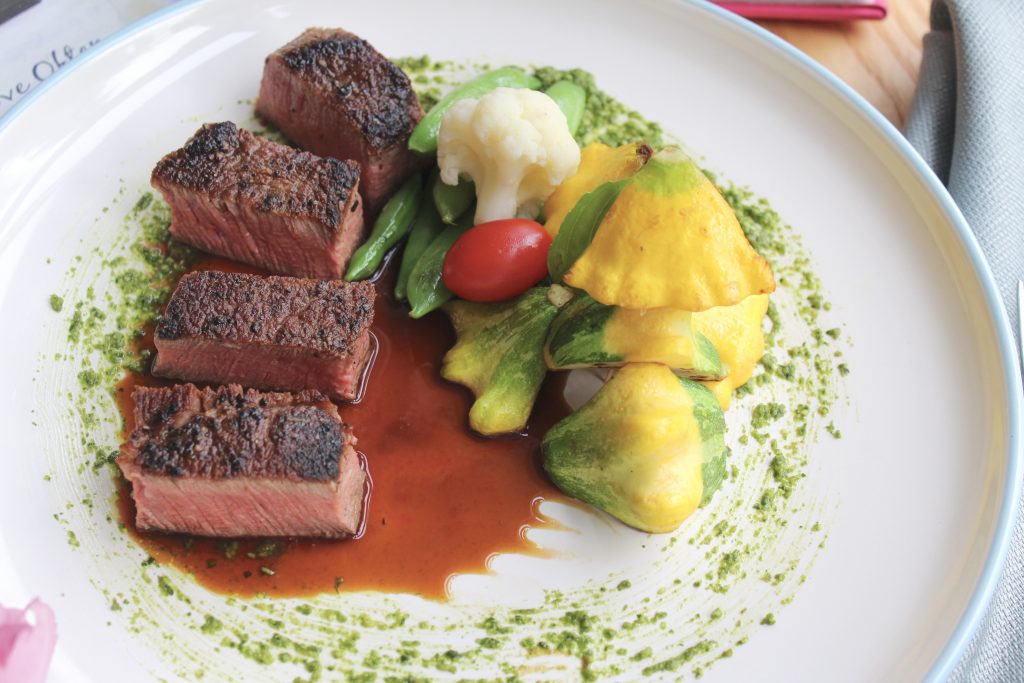

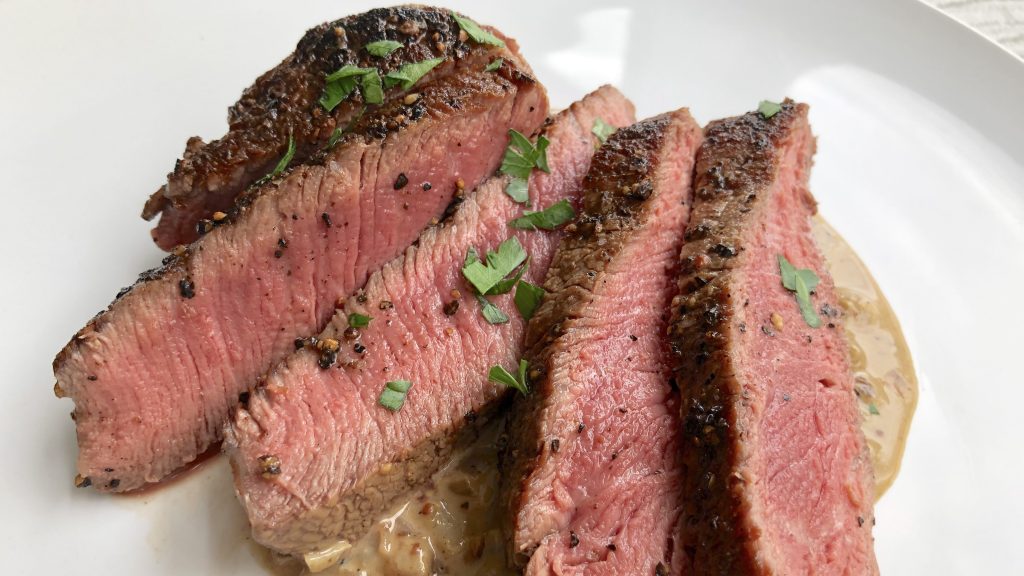
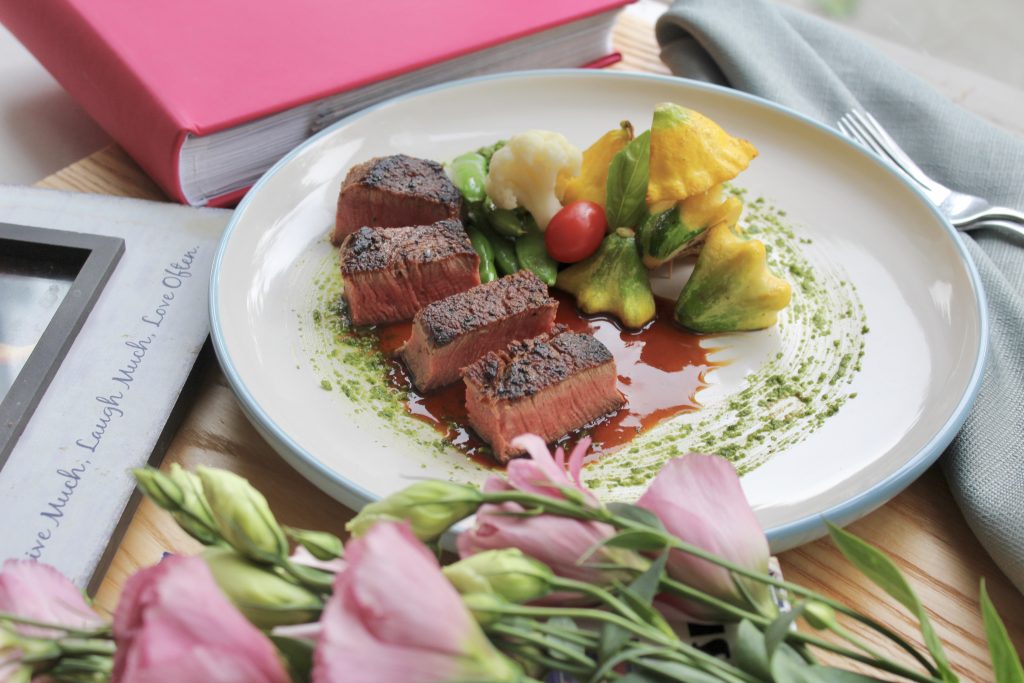
Ok, getting hungry here. So let’s get cooking!
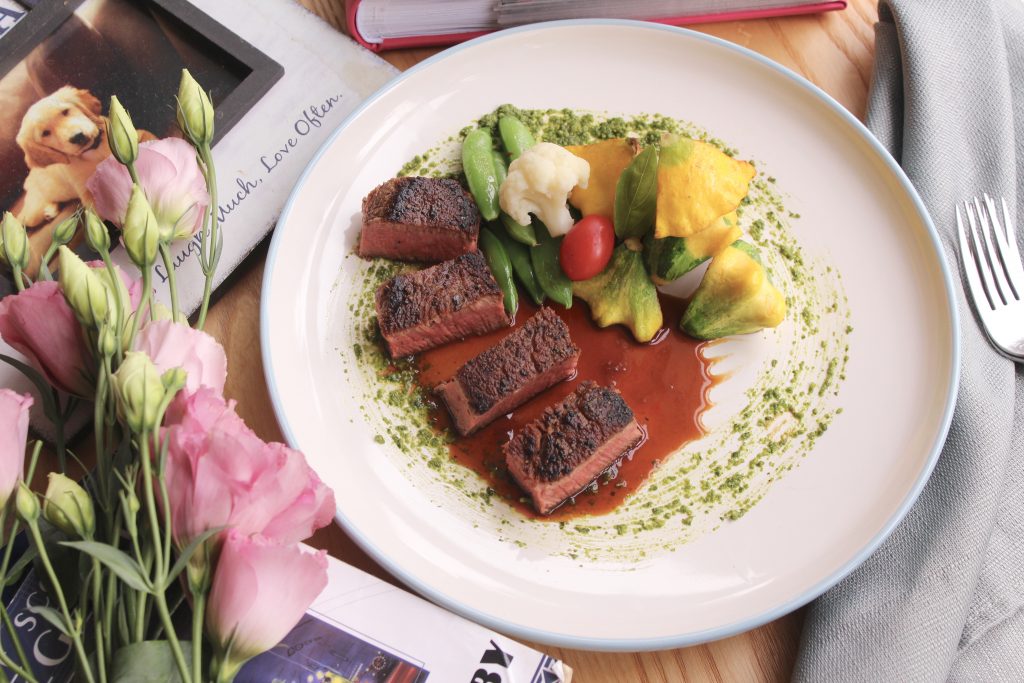
For an expensive cut like Filet, a recipe you can trust is a must, and this one has been tested relentlessly to perfection! The steak preparation itself is quite simple, takes only a couple of minutes on the stovetop, couple of minutes in the oven and a few more minutes to prepare the pan sauce while your steaks are resting!
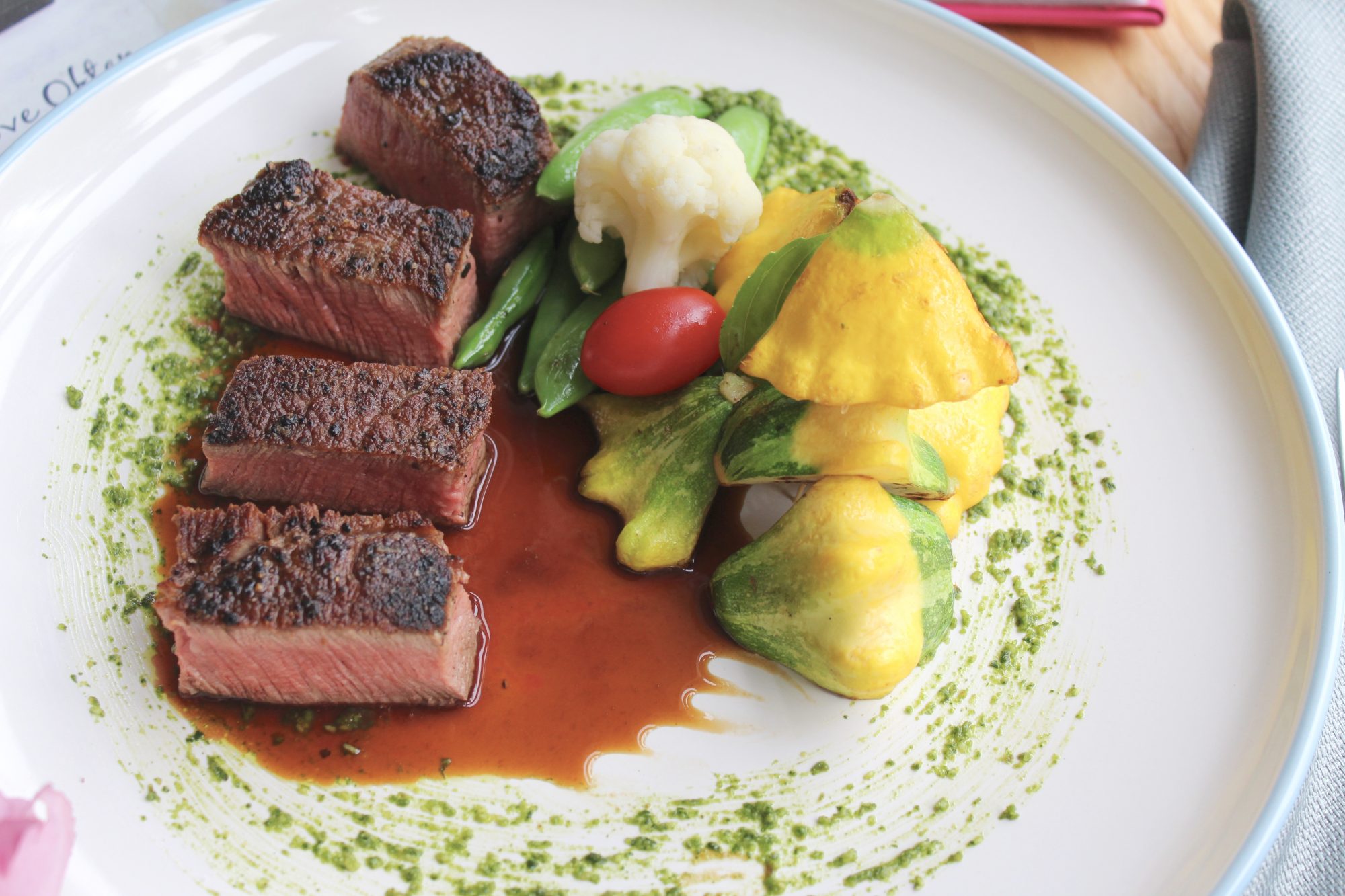
Dry the outside of the steak well with a paper towel (without this step it will be harder to get a nice sear on the steak and you will steam the steak instead resulting in gray unappealing colour.) Season the steak generously with salt and freshly ground pepper.
Preheat the oven to 250°.
Heat a large heavy bottom skillet (ideally cast iron) over medium high heat for at least 3-4 minutes until very hot and shimmering. Add oil to the skillet. Place your steaks into the skillet and cook without disturbing them for around 3 minutes, until nice golden brown and crusty. Gently sear the sides of the steak also. Be sure not to overcrowd the pan, cook in batches if necessary.
Slide the butter under each steak until melted, then flip and move the whole skillet into the oven.
Do not walk away. It won't take long. For my smaller steaks it was just under 3 minutes. Medium 1-1.5" steak may take around 5-6 minutes. But even for a large 2" tall - it should not take more than 10 minutes or so. Measure the temperature of the steak with an instant read thermometer to reach your desired doneness (I personally prefer to take my ribeye steaks out at 135° knowing that temperature will still go up a few degrees.) But follow your preference as well as pay attention to Government suggested guidelines.
Remove the steaks from the oven, transfer to a cutting board, tent loosely with aluminum foil and rest for 5 minutes. Then slice and enjoy!
While the steaks are resting prepare the sauce. Pour out all but a teaspoon or so of the oil left in the pan. If your steaks were very lean and not much oil remains, consider adding another couple teaspoons of oil. Turn the heat to low and add shallots. Cook for about 3 minutes until fragrant and softened. Add peppercorns and garlic and cook for just a few seconds until softened. Add cognac to deglaze the pan and stop the cooking process, continue cooking for a minute or two until reduced by half. Pour in the stock and cook for a few minutes until reduced to your desired thickness.
Add cream, mustard and butter to the sauce and stir vigorously until emulsified into thick sauce. Taste it and season as needed with additional salt and pepper. Pour in any juices that may have accumulated on the plate where steaks were resting.
Slice your steaks on a bias and serve with peppercorn sauce.
Note: you may reduce the amount of peppercorns or even omit entirely for a simple and rich pan sauce.
Ingredients
Directions
Dry the outside of the steak well with a paper towel (without this step it will be harder to get a nice sear on the steak and you will steam the steak instead resulting in gray unappealing colour.) Season the steak generously with salt and freshly ground pepper.
Preheat the oven to 250°.
Heat a large heavy bottom skillet (ideally cast iron) over medium high heat for at least 3-4 minutes until very hot and shimmering. Add oil to the skillet. Place your steaks into the skillet and cook without disturbing them for around 3 minutes, until nice golden brown and crusty. Gently sear the sides of the steak also. Be sure not to overcrowd the pan, cook in batches if necessary.
Slide the butter under each steak until melted, then flip and move the whole skillet into the oven.
Do not walk away. It won't take long. For my smaller steaks it was just under 3 minutes. Medium 1-1.5" steak may take around 5-6 minutes. But even for a large 2" tall - it should not take more than 10 minutes or so. Measure the temperature of the steak with an instant read thermometer to reach your desired doneness (I personally prefer to take my ribeye steaks out at 135° knowing that temperature will still go up a few degrees.) But follow your preference as well as pay attention to Government suggested guidelines.
Remove the steaks from the oven, transfer to a cutting board, tent loosely with aluminum foil and rest for 5 minutes. Then slice and enjoy!
While the steaks are resting prepare the sauce. Pour out all but a teaspoon or so of the oil left in the pan. If your steaks were very lean and not much oil remains, consider adding another couple teaspoons of oil. Turn the heat to low and add shallots. Cook for about 3 minutes until fragrant and softened. Add peppercorns and garlic and cook for just a few seconds until softened. Add cognac to deglaze the pan and stop the cooking process, continue cooking for a minute or two until reduced by half. Pour in the stock and cook for a few minutes until reduced to your desired thickness.
Add cream, mustard and butter to the sauce and stir vigorously until emulsified into thick sauce. Taste it and season as needed with additional salt and pepper. Pour in any juices that may have accumulated on the plate where steaks were resting.
Slice your steaks on a bias and serve with peppercorn sauce.
Note: you may reduce the amount of peppercorns or even omit entirely for a simple and rich pan sauce.
Notes
